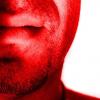-
Similar Content
-
Posts
-
So I ended up getting and X-H2 over the X-T5 because of a good deal that came up. Needing to buy a card, I needed to figure out, what is the real impact of a card's speed for photos? In particular, I'm going to test how shooting at 15 FPS will differ between: Angelbird - AV PRO CFexpress B SE - 512 GB and Angelbird AV PRO CFexpress SX - 160 GB. How many shots can I get off before buffer fills, and how long does it take for the buffer to clear? MOP: X-H2 Factory rest, card formated, no lens (body cap on), performance boost on, manual exposure, mechanical SS @ 1/8000, IS off, Shoting RAW Compressed Lossless with only one card in. Held shutter release till buffer filled, and used stop watch to see how long for buffer to clear. Subtracted two frames from total taken as that's how long it takes me to release the trigger once the buffer is full. Repeat 2x for sanity check. ***TEST RESULTS*** ~~~64GB Lexar Pro SD 150MB/s~~~ 75 shots to fill buffer, 36 Seconds to clear it ~~~Angelbird AV Pro SX 160GB~~~ 251 shots to fill buffer, 5 Seconds to clear it .~~~Angelbird AV Pro SE 512GB~~~ 232 shots to fill buffer, 4 Seconds to clear it ***Conculsion*** If burst shooting an X-H2 at 15 FPS is your thing, buy the Anglebird 512GB SE for the same price as the 160GB SX. Below is a shot on X-T2 w/ the Fuji 70-300. I manged to fluke it off with a dead battery by turning the camera off and on again, and squeezing three more shots out (this was the last shot). Ta for now!
Welcome, dear visitor! As registered member you'd see an image here…
Simply register for free here – We are always happy to welcome new members!
-
Xt5 firmware updated and now cannot see pics taken on lcd when pressing playback. Any ideas please? Elie
-
By mypointofview · Posted
Have you tried a factory reset? Maybe you changed unintentionally a setting? -
By Matt Kerby · Posted
Only does that when you turn it on? -
Hello. I have a x-s10 that I use multiple lenses with. Yesterday I noticed that with the Fujinon 16mm lens I'm having issues auto-focusing. It works on video but not for still images. When I half press the button it focuses a bit then when I release the button it snaps back to the previous focus point. Even though it manages to focus the image is still blurry. Any ideas please. I already did a a major google search and nobody has mentioned this issue. Thanks, Etienne
-





Recommended Posts
Join the conversation
You can post now and register later. If you have an account, sign in now to post with your account.
Note: Your post will require moderator approval before it will be visible.